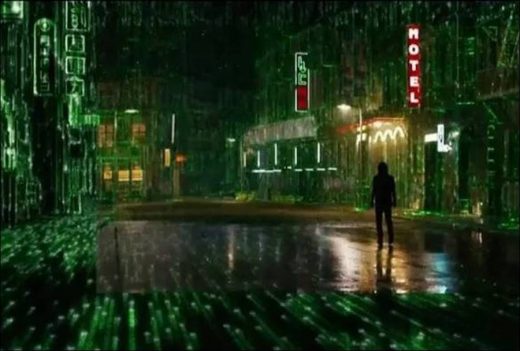How do you know you are not currently in a computer simulation? This idea is often known as the ‘simulation hypothesis’. The simulation hypothesis simply states: “We live in a computer simulation.”
What does it mean to live in a simulation? As far as I understand this concept, it’s all about interacting with this simulation. When you are in a simulation, your sensory inputs are taken from the simulation and your motor activities affect the simulation. Through these interactions you are completely immersed in the world of simulation.
At the start of The Matrix, Neo’s biological body and brain are in a capsule in an un-simulated world, connected to a simulation elsewhere. Neo’s brain is not “in” the simulation, in the spatial “inside” sense as we know it. However, all their sensory input comes from simulation and their activities go there; therefore, he lives in a simulation in the context of his material senses. After taking the red pill, his senses respond to the non-simulated world, thereby escaping his life in the simulation.
Only installing and operating the correct simulation
I will use the word ‘sim’ [similar/imitation] for a human living in a simulation. There are at least two types of sims available. First, biosimilars [biosimilars/eng. biosim] exists: These are biological entities outside and dependent on the simulation (in a spatial sense). Neo is a ‘biosym’. So is the brain in a capsule connected to a computer. A simulation with biosyms is an impure simulation because it contains non-simulated elements (biosyms).
Second, there are pure sims. These are simulated entities that literally exist within the simulation. Most of the people mentioned in Daniel F. Galouye’s novel ‘Simulacron-3’, published in 1964, were pure sims. Because they are part of the simulation, they receive direct sensory input from the simulation. The most important thing is that their brains have also been simulated. Only simulations containing pure sims can be pure simulations; that is, they are simulations in which everything that exists is simulated.
There may also be mixed simulations involving both bios and pure sims at the same time. The main characters in The Matrix are the bios of Neo and Trinity; In contrast, the “machine” characters, Agent Smith and the Oracle, are pure sims. While the main character in the 2021 movie ‘Free Guy’, played by Ryan Reynolds, Guy is a non-player and fully digital character in a video game, his partner in the game, ‘Molotov Girl’, played by Jodie Comer, is a man with an ordinary life outside of the game. He is a video game actor and designer. So Guy is a pure sim while Molotov Girl is a biosim.
The simulation hypothesis applies equally to ‘pure’, ‘impure’ and ‘mixed’ simulations. The frequency of repetition of the idea of simulation in science fiction and philosophy is more than evenly distributed among themselves. In the near future, impure simulations will become more common than pure simulations as we know how to connect people to simulations; however, for now we don’t know how to simulate humans. In the long run, however, pure simulations may become more common. In the case of impure simulations, it is not possible to find an infinite number of brains, and in any case it can be quite difficult to connect them to the simulation. However, it is easy to create pure simulations in the long run. We only need to run the correct simulation program and monitor its operation.
Human bodies can be simuated as biological sisters
Here is another distinction for you. The ‘global simulation’ hypothesis asserts that a simulation simulates the entire universe in detail. As an example, a global simulation of our universe would simulate me, you, every person on our planet, planet Earth itself, the entire Solar System, the Milky Way Galaxy, and everything else that exists outside of it. The ‘local simulation’ hypothesis states that the simulation simulates only a part of the universe in detail. It can simulate just me or New York or just Earth and everyone on it, or just the Milky Way Galaxy.
In the short term, local simulations may be easier to create; because they need much less computational power. On the other hand, a local simulation can interact with the rest of the world, which can cause some problems. In the 1999 movie ‘The Thirteen Floor’, the simulators only simulated Southern California. When the protagonist tried to go to Nevada, he was met with signs that read “Road closed”. As he continued on his way, the mountains turned into thin green lines. This is not a good way to design a convincing simulation. If a local simulation is truly local, it cannot properly simulate interaction with the rest of the world.
For local simulations to work well, they need to be flexible. In order for simulators to imitate me, they must imitate most of my environment. I talk to people living elsewhere, watch world events on TV, and travel often. The people I meet interact with many other people I know as time goes on. This is why a successful simulation of my local environment requires an extremely detailed simulation of the rest of the world. Simulators may need to create more detail while the simulation is running. For example, after a spacecraft has photographed it and sent it back to Earth, a simulation of the far side of the Moon will need to be reworked. There may be some natural stopping points: But can simulators show the Earth and the Solar System in detail as needed, with a primitive simulation of the universe beyond?
continue Reading: Can simulators show you parts of your personal history?
Visits: 122



